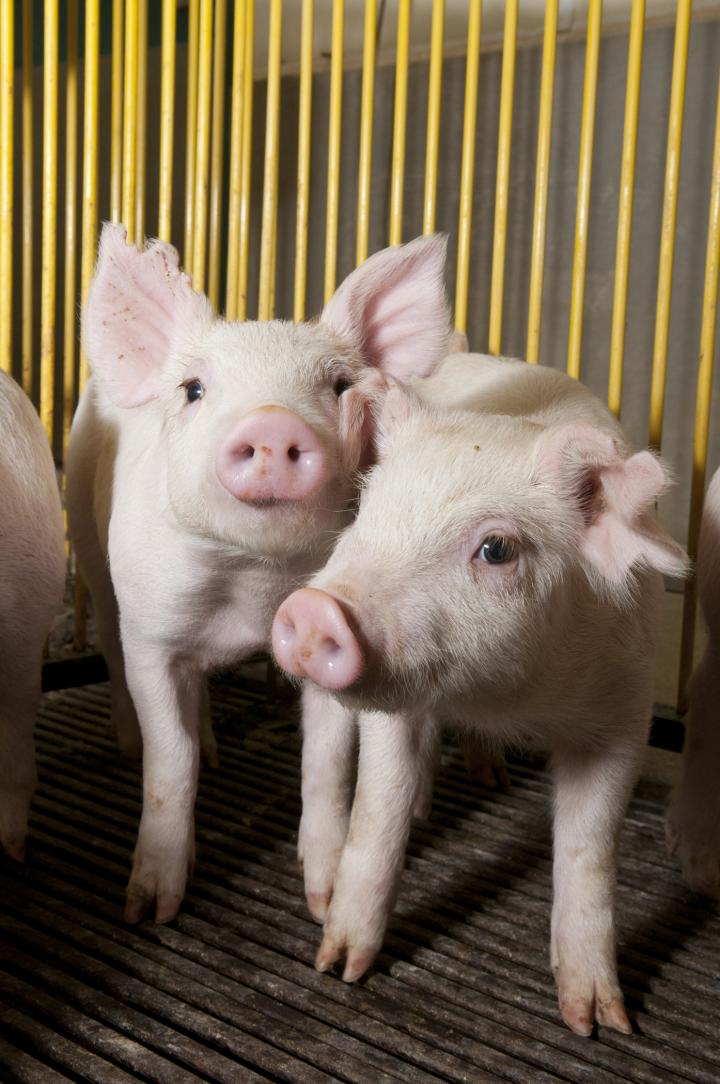
Antibiotic genes are increasing and are just a plane ride away. Around the world, antibiotic use and resistance is increasing while the discovery of new antibiotics has nearly halted.
In new research conducted by Michigan State University and published in the current issue of the journal mBio, this troubling trend is exacerbated by concentrated animal feeding operations. Results from the study show that in large swine farms where antibiotics are used continuously in feed for growth promotion and disease prevention, multidrug-resistant bacteria are likely the norm rather than the exception.
The research team, led by James Tiedje, MSU Distinguished Professor of microbiology and molecular genetics and of plant, soil and microbial sciences, studied large-scale swine farms in China and one population of pigs in the U.S. They confirmed the presence of many partner genes -- resistance genes and mobile genetic elements found together. Simply put, when one gene increased or decreased in abundance, partner genes increased or decreased in nearly identical fashion.
"In the fight against the rise of antibiotic resistance, we need to understand that the use of one antibiotic or, in some cases, antibacterial disinfectants may increase the abundance of multidrug resistant bacteria," he said. "Tracking the source of antibiotic resistance is quite complicated because antibiotic use, which increases the occurrence of resistance, is widespread, and antibiotic resistance can spread between bacteria."
The Chinese farms are quite close to large cities. So controlling antibiotic resistance in pigs and farms is important to minimizing human risk. The complexity of finding the sources of antibiotic-resistant bacteria contributes to a global health concern, causing an estimated $20 billion in health care costs each year in the U.S.
"This is a global issue rather than one that's simply isolated in China; multidrug resistance is just a plane ride away," Tiedje added. "This is why our work in China is definitely as relevant as in the United States."
Some of these partner genes can make bacteria resistant to antibiotics that were not even fed to the animals. These partner genes were likely present in the same bacteria that were resistant to one of the antibiotics that was fed to the pigs. So when one antibiotic is used, resistance to many antibiotics can increase.
"At the Chinese farms, there were not only two partner genes, but 14 partner genes, all occurring together in farms that are thousands of miles apart," said Tim Johnson, lead author with MSU's Center for Microbial Ecology. "These genes confer resistance to up to six kinds of antibiotics, and some allow bacteria to reshuffle the order of their genes."
In Chinese soils that received manure-based fertilizer, the same resistance genes were found in manure and in high abundance. However, the kinds of bacteria present in soil were quite different. This indicates that on the Chinese farms, the potential for resistance gene transfer among environmental bacteria is likely, said Yongguan Zhu, co-author from the Chinese Academy of Science.
"Our results clearly show the diversity of resistance genes on swine farms and that many genes likely originated from the same source. We also showed the linkage of resistance genes to each other as well as genes that enable them to be clustered in one bacteria or shared among bacteria," Tiedje said. "These findings will help guide practice and policies for prudent agricultural antibiotic use and to minimize antibiotic resistance genes spread to pathogens."
Source: Michigan State University
 Print Article
Print Article Mail to a Friend
Mail to a Friend
